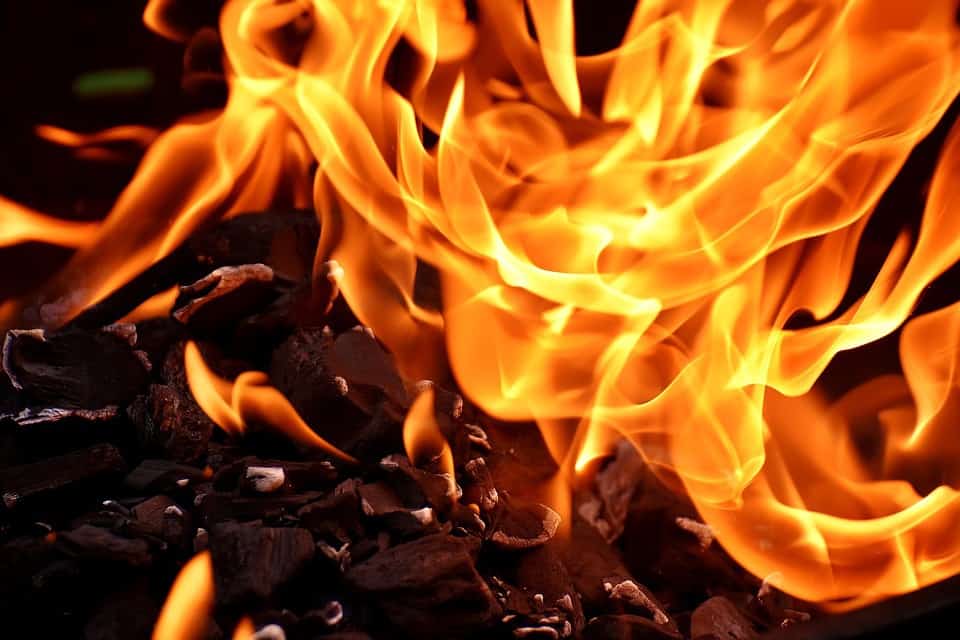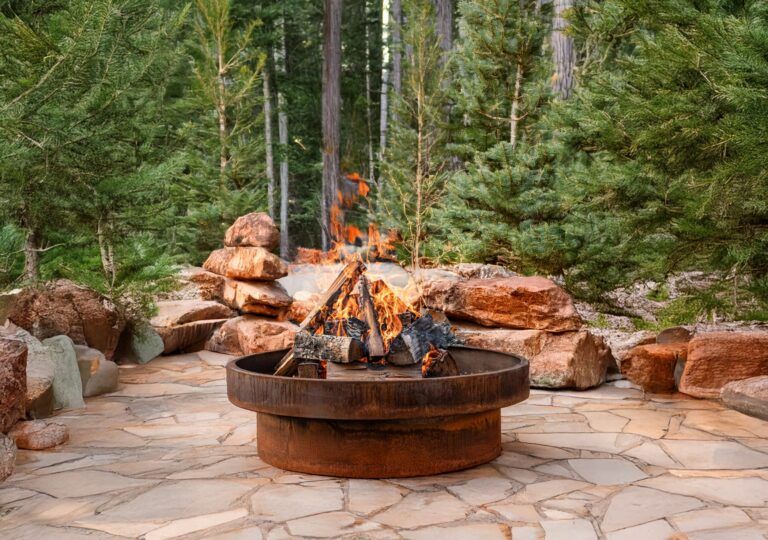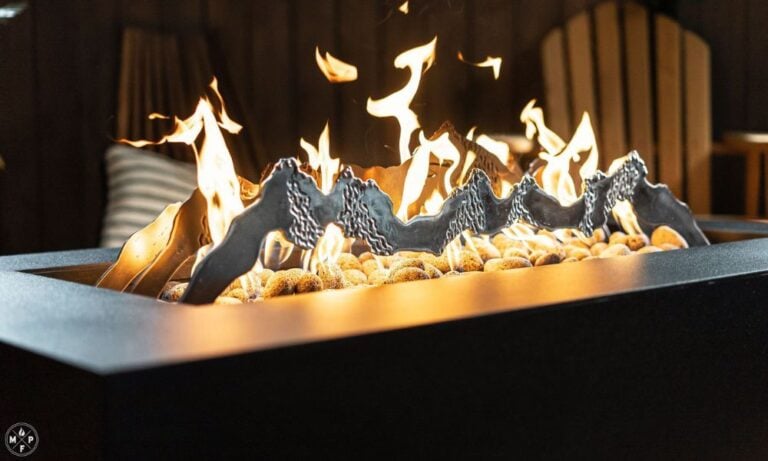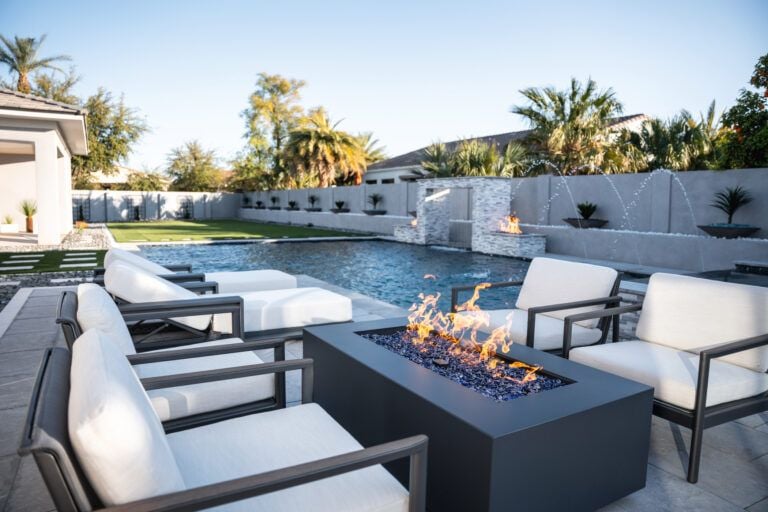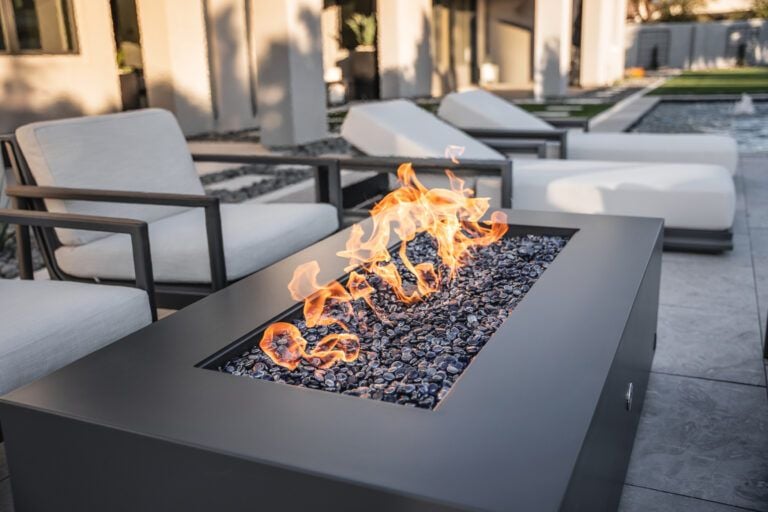
Why Choose A Natural Gas Fire Pit Burner?
Why Choose A Natural Gas Fire Pit Burner?
There are a number of options out there when considering what kind of fire pit burner you want. Each of them comes with a number of qualities and effects. Let’s take a look at the different options for fueling your fire pit. We will go over why we think that natural gas or propane is the best choice.
Wood Burning Fire Pits
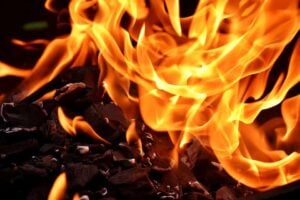 Wood burning is the oldest method of creating fire. It is as if the feeling of a wood fire is coded into our DNA. While the beauty of a wood fire is certainly unmistakable, wood burning comes with a few byproducts that should be considered. Simply put, wood storage demands a lot of space. It also requires protection from rain and significant effort to prepare. Of course, you can purchase pre-cut and pre-cured wood. But you will be paying a premium for it and will still have the storage issue.
Wood burning is the oldest method of creating fire. It is as if the feeling of a wood fire is coded into our DNA. While the beauty of a wood fire is certainly unmistakable, wood burning comes with a few byproducts that should be considered. Simply put, wood storage demands a lot of space. It also requires protection from rain and significant effort to prepare. Of course, you can purchase pre-cut and pre-cured wood. But you will be paying a premium for it and will still have the storage issue.
Furthermore, wood fires cause smoke and embers while gas fire pits do not. Many states banned wood burning fire pits due to the possibility of an ember flying off the fire into dry brush to create a forest fire. Gas fire pits burn clean, producing no embers. They emit less smoke and fewer harmful byproducts. This makes them a cleaner option. However, wood is renewable, so using it as fuel consumes fewer resources. This makes it a potentially more environmentally friendly option.
Propane Fire Pits
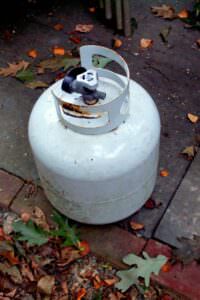 Propane is a clean-burning substance that exists in a gas state at normal temperatures. It is a liquid at cooler temperatures and is created by natural gas processing or petroleum refining.
Propane is a clean-burning substance that exists in a gas state at normal temperatures. It is a liquid at cooler temperatures and is created by natural gas processing or petroleum refining.
Given its compressible form, propane is commonly stored and transported in tanks between 5 gallons to 100 gallons. Natural gas burns cleanly. It emits only carbon monoxide and carbon dioxide. These emissions are lower than those from gasoline. As soon as propane is released into the air, it transmutes to a gaseous state. However, given its relatively higher density than air, it can pool into your fire pan if there is not enough ventilation. Propane does produce higher BTUs with less fuel than Natural Gas, however, it is about 6 times the cost.
Natural Gas Fire Pits
Natural gas is a natural substance that forms as carbon life forms are broken down and released through vents in the earth’s crust. It has less density than air and tends to rise, which negates the risk of pooling fuel at the bottom of your fire pit. However, Natural Gas is odorless so it is more difficult to detect a leak than propane.
Given its tendency to rise, natural gas is easily transported through gas pipes into houses and fire pits. At 1/6th the cost of propane, it might seem like natural gas is the obvious choice. However, Natural Gas only produces about 1,000 BTUs from the same volume that propane could produce 2,500 BTUs.
Convenience
In the end, most people make the decision of fuel for their fire pit based on the convenience of the fuel storage and transportation. If you live on a property with plenty of room and trees, then a wood burning fire pit might be for you. If your house runs off of a large natural gas or propane supply, then it might be easier to cut into that fuel supply instead.
Make sure to choose the right burner as the velocity with which the fuel must be delivered will change dramatically between propane and natural gas. Finally, consider keeping a small propane tank somewhere near your fire pit and running a fuel line to it. Just remember that the tank of propane will only fuel your fire pit for so long before needing to be refilled, while a natural gas line will continuously flow as long as the house is supplied. Happy choosing!
The MFP Advantage
- Professional Grade Quality
- Nationwide Shipping
- Made in the U.S.A.
- Distinctive, Hand-Built Products
- Vast Size & Finish Options
- Highest Customer Satisfaction
- Custom Design Available
Explore our exceptional line of fire and outdoor products and take your space to new levels of Luxury...
More to explorer

Top 10 Fire Pits of 2025: Warmth and Style for Your Outdoor Space
As the days get longer and the evenings get cooler, what better way to enjoy your outdoor space than with a fire

The Benefits of Multiple Fire Features in Backyard Design
Imagine stepping into your backyard and being greeted by the alluring dance of flames throughout your space! Creating a backyard design with
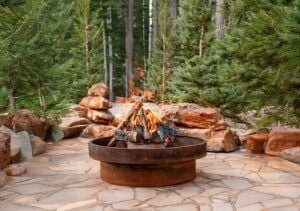
Discover the Timberline Collection of Wood Burning Fire Pits
In a world that’s constantly buzzing with the convenience of instant gratification, there’s a timeless appeal to the simple, primal pleasure of

